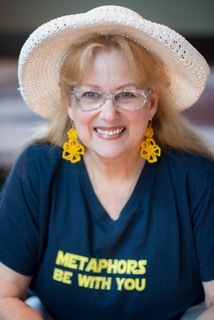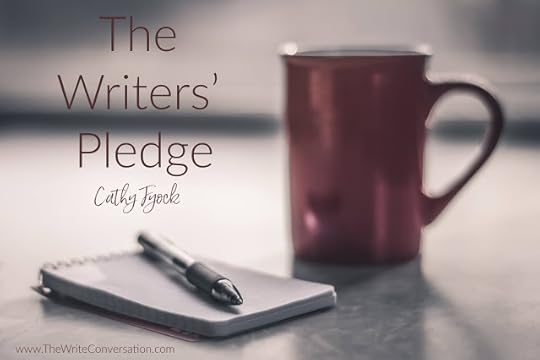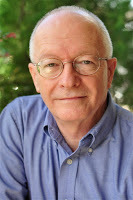Edie Melson's Blog, page 186
October 2, 2020
Tips to Organize Your Life for Writing

by Tim Suddeth @TimSuddeth
Recently, my family watched Love It or List It on HGTV. The show is about a family that is deciding whether to stay in their newly renovated home or to move into a new house. In this episode, the stars were going through the original house and were surprised to discover how clean and organized everything was. Everything was in its place.That was not my house.
My house is clean, probably not to Dr. Deborah Birx’s standards, but most three-year-olds would walk in. However, there are several areas that could use some organizing. I have thoughts and plans, but I haven’t gotten around to them yet.
I assume some of you understand how I feel. There are only so many hours in a day and way more things to do then the hours will allow. Maybe a day with extra hours will come by and then I’ll be able to get to them.
There are others of you cringing at the very thought of an unfinished project. Stepping around it would drive you crazy. You have to get-her-done before you could possibly focus on anything else.
I started with housework, but let’s think about this in other areas of our lives. (My wife said please leave her house out of it.) How do you approach you writing?
Do you have projects you want to get to when that longer day comes around?
Have you started projects only to abandon them waiting for that special feeling to return?
Are you having difficulty deciding what to do next?
My first advice is don’t get down on yourself. Unless you are writing for someone else, a calendar is not always the best way to determine your writing progress. Intentions are nice, but there is a lot to learn before you should write your story and rushing it is usually not good.
Lately I’ve been growing in my appreciation for the power of mulling. Of taking time to carefully think about and analyze a topic. How would this situation look from a different perspective? It’s amazing at the insights taking time can bring up. And new insights are the jewels we writers sprinkle into our writings to make them sparkle.
The trick is knowing when to stop mulling and when to open the laptop. When does mulling morph into sloth? Uh, I’ll have to think about that.
Well, Tim. What should I do about getting those projects I’ve thought about or have half finished?
I would tell you, like that family earlier who was thinking about moving...
Get Organized
1. Pare the clutter. First you need to determine what is important to you. Things change over time. When I started writing, I was helping people do resumes and manage their careers. I’m no longer interested in that. So, is it something you still care about?
And is it something you have passion for? Friends, family, and countrymen are so good at finding stories that they think should be told. That doesn’t mean you’re the one who should do it. Going back to there are only so many hours in the day, is this something you want to spend your precious, and valuable, time on?
If the answer is no or not now, you can either delete or trash it, or archive or box it up. I’m more into deleting things. If it’s good, God will bring it back up. But I will never underestimate what can be found in my Mom’s attic. It may be a treasure. Or a rat’s nest.
2. Prioritize the Jobs Make a list or a stack of the remaining jobs in the order of their importance to you. No one else, within reason, but which means more to you. I like to put an easy one at the top to help get me started.
3. Break the big stuff into partsOne of the things on my list is finish my fifth book. I have less than ten thousand words done so that is too big a project to put on my daily list. So, for the big stuff, bring it down into doable tasks. Maybe write five hundred or a thousand words. Maybe do some research or plot out the next few scenes. The main thing is keep the momentum moving forward.
Breaking things into tasks also helps us get started. Thinking about writing a book, starting a blog, or creating a social media platform is enough to cause a panic attack and send you back under the blanket. But doing one page, determining when you will send out your blog posts, or working thirty minutes on two social media platforms, that’s something you can do. And still be able to breathe.
4. Print out the listAnother superpower writers have is to make a list. (List-it Man) Nothing encourages me more to continue to work on my list than seeing something completed and checking it off.
And the list saves me time thinking of what needs to be done next.
Remember, you are the one who prioritize your tasks. Only you know what is your own unique goal. There may be a writer who writes articles similar to you, similar Bible studies, or in your same genre, but that doesn’t mean you have to do everything the way she does. What will work for you? How is God leading you?
It all comes down to being in tune with Jesus. He is the one Who has THE plan for your live. Who will give you the power to accomplish great things. And Who will open and close the necessary doors. What a treat it must have been for Adam and Eve to stroll through the garden with Him? (No snakes then.) Isn’t that what He is offering to us?
TWEETABLETips to Organize Your Life for Writing - @TimSuddeth on @EdieMelson (Click to Tweet)
 Tim Suddeth is a stay-at-home dad and butler for his wonderful, adult son with autism. He has written numerous blogs posts, short stories, and three novels waiting for publication. He is a frequent attendee at writers’ conferences, including the Blue Ridge Mountain Christian Writers Conference and a member of Word Weavers and ACFW. He lives near Greenville, SC where he shares a house with a bossy Shorky and three too-curious Persians. You can find him on Facebook, Twitter, or at timingreenville.com.
Tim Suddeth is a stay-at-home dad and butler for his wonderful, adult son with autism. He has written numerous blogs posts, short stories, and three novels waiting for publication. He is a frequent attendee at writers’ conferences, including the Blue Ridge Mountain Christian Writers Conference and a member of Word Weavers and ACFW. He lives near Greenville, SC where he shares a house with a bossy Shorky and three too-curious Persians. You can find him on Facebook, Twitter, or at timingreenville.com.
October 1, 2020
Two Rules for Telling an Attention-Grabbing Story

by A.C. Williams @Free2BFearless
I like rules. Rules are good. They tell you where it’s safe to drive and walk and park and where you shouldn’t do any of those things. Sure, some rules get irritating, but I’d much rather know the rules than have to guess at them. Typical first-born child response, right?
Write, write, and write some more. Don’t quit. Get personal. Get honest. And whatever else you do: start at the beginning and don’t be boring.
TWEETABLE
 A.C. Williams is a coffee-drinking, sushi-eating, story-telling nerd who loves cats, country living, and all things Japanese. She’d rather be barefoot, and if isn’t, her socks will never match. She likes her road trips with rock music, her superheroes with snark, and her blankets extra fuzzy, but her first love is stories and the authors who are passionate about telling them. Learn more about her book coaching services and follow her adventures on social media @free2bfearless.
A.C. Williams is a coffee-drinking, sushi-eating, story-telling nerd who loves cats, country living, and all things Japanese. She’d rather be barefoot, and if isn’t, her socks will never match. She likes her road trips with rock music, her superheroes with snark, and her blankets extra fuzzy, but her first love is stories and the authors who are passionate about telling them. Learn more about her book coaching services and follow her adventures on social media @free2bfearless.
September 30, 2020
Scrivener for Organization

by Lynn H. Blackburn @LynnHBlackburn
Creatives are not generally known for their organizational skills. But authors who want to be in the publishing game for the long-term know how important it is to find a method that works for them and keeps all the aspects of their writing life organized. For me, it's Scrivener for organization.Why does it matter?
I don’t have time to be unorganized.
1. I write books. Everything else I write, in some way, relates back to this. So everything I write needs to make sense for my career and not take too much time away from the writing of books.
2. I contribute to blogs. Each month for the past ten years (yep, really, ten!) I write a post for The Write Conversation (the one you’re reading now). For the past several years, I’ve also shared writing insights and encouragement on the Blue Ridge Mountain Christian Writers Conference blog. This means that each year, I have at least twenty-four blog posts to write, edit, and submit.
3. I have a newsletter. I send this newsletter out 10-15 times a year to my subscribers. I share a few thoughts about what’s going on in my personal life and in my writing world while keeping my readers up to date about new releases, sales, and giveaway opportunities.
4. I promote my books. As our own Edie Melson has told me (more than once because I don’t like it and she has to say it again and again), if you write the books, you have to be willing to sell the books. Thanks to my publisher, I have a fabulous publicist and marketing team who work hard to get my books in front of readers. In the months leading up to a release, this means making myself available for podcast interviews and phone interviews, writing guest posts on various websites, and responding to written interview questions.
5. I teach at conferences. I love writing conferences and I love teaching at conferences, and this is another part of my writing business that requires planning and organization.
As you can see, it’s a lot to juggle. Especially when you consider that writing is a part-time adventure for me. I have young children, I homeschool, and I write. I don’t have time to waste time.
Years ago, I kept everything in folders on my computer. A folder for my blog posts. A folder for my newsletter. A folder for marketing. A folder for conferences. And that’s not a bad way to do it.
But I like the way I do it now so much better.
I use Scrivener .
Scrivener is a writing software that is designed to help writers organize large projects. It’s specifically geared for novels, non-fiction manuscripts, and academic theses. Projects that require heavy amounts of research, reference material, and involve lengthy word counts can be organized and managed within a single Scrivener project.
But blog posts and newsletters aren’t lengthy, so why use Scrivener?
For me, the key is to think of my other writing—blogs, newsletters, promotion—as one big project. Within my one Other Writing Scrivener project, I created folders for The Write Conversation, the Blue Ridge blog, my newsletter, promo for my latest book, etc. You can see these folders in the Binder.


By the way, I love to teach Scrivener and I’ll be teaching it in person at the Blue Ridge Mountains Christian Writers Conference in May, and in-person at the Weekend with the Writers in February. I’ll also be virtually presenting a one-hour overview of Scrivener at the West Coast Christian Writers Conference in February. I’d love for you to join me at any of these events.
Grace and peace,

TWEETABLE
Scrivener for Organization - Tips from @LynnHBlackburn on @EdieMelson (Click to Tweet)
 Lynn H. Blackburn loves writing romantic suspense because her childhood fantasy was to become a spy, but her grown-up reality is that she's a huge chicken and would have been caught on her first mission. She prefers to live vicariously through her characters and loves putting them into all kinds of terrifying situations while she's sitting at home safe and sound in her pajamas!
Lynn H. Blackburn loves writing romantic suspense because her childhood fantasy was to become a spy, but her grown-up reality is that she's a huge chicken and would have been caught on her first mission. She prefers to live vicariously through her characters and loves putting them into all kinds of terrifying situations while she's sitting at home safe and sound in her pajamas!
Lynn’s titles have won the Carol Award, the Selah Award, and the Faith, Hope, and Love Reader’s Choice Award. Her newest series kicks off in March 2021 with Unknown Threat, Book 1 in the Defend and Protect series.
She is a frequent conference speaker and has taught Scrivener to writers all over the country. Lynn lives in South Carolina with her true love and their three children. You can follow her real life happily ever after at LynnHBlackburn.com and @LynnHBlackburn on Bookbub, Facebook, Twitter, Pinterest, and Instagram.
September 29, 2020
Time to Update Your Social Media Strategy

by Edie Melson @EdieMelsonWelcome to The Write Conversation! This has been a world-shifting couple of years in the realm of social media. Facebook has continued to tweak their algorithms and format until nothing looks the same. Twitter has had major crack downs on spam accounts and it looks very different as well. In the past two years Thunderclap has been shut down, and so has Klout. So it's definitely time to update your social media strategy.
All these constant changes have many people are scrambling and scurrying. Chasing trends, adding new apps, and swearing off social media completely aren't the best way to deal with this new world. So today I'm going to lay out my strategy in hopes of helping you find a blueprint to follow. It's still a great time to make valuable online connections, we just need to continue to change how we do it. These tips for social media for writers should help you get your online connection plan in tip-top shape. Things to Give Up There are things we can continue and things we need to let go of. These fall into the latter category.
1. Scheduling Facebook posts through Hootsuite, Buffer or any other third-part application. No, I'm not giving up Hootsuite altogether, but Facebook has slanted their algorithm to favor posts that are NOT scheduled outside of Facebook. Since I can't schedule FB effectively, I've cut way back on how many updates I share on Facebook daily. I now concentrate on one or two posts and work on starting—and having—a conversation with what I share.
2. Checking Klout. Klout was a program that provided a snapshot of how an online presence was doing. Now it's gone, so one less things to worry about!
3. Scheduling repeat tweets. There was a time when we could compose a tweet and release the same update to our twitter followers over a period of days or weeks. No longer. Now twitter isn't allowing this kind of repeated update. It's still fine—and even encouraged—that we retweet content. But repeating original content is no longer allowed. This change led directly to the death of Thunderclap. A program that shared the exact same social media update over thousands of networks at the same time.
4. Sharing as many links on Facebook. Another change to the Facebook algorithm is the fact that they want all conversation to stay on Facebook. Because of this, any post with a link that sends people away from Facebook has less visibility. Instead I compose my Facebook updates with conversation starting with text and an image. If the conversation revolves around a specific blog post, I don't put that link in the original update. I wait and post the link in the first comment below the post.
Things to Concentrate On 1. Authentic content that encourages connections. All social media networks are skewing their algorithms to favor anything posted that leads to conversation.
2. Diversification: with all that’s going on in the digital universe we can see the wisdom of not putting all our social media eggs in one basket. Now may be an excellent time to begin experimenting with Pinterest or Instagram or LinkedIn. Remember though, Instagram is owned by Facebook. If you're diversifying by using Facebook and Instagram you're essentially still on only one network. If your Facebook account is shut down, chances are you'll lose your IG account too.
3. Video: We need to be more open about trying new things and new ways to connect. The hottest thing again this year is video, particularly Facebook live. It's time to be brave and begin to venture out of our comfort zone.
4. Blogging: Now more than ever writers need to build a stable digital foundation. Social media networks no longer qualify as stable. Small changes can hold devastating results if that’s our only audience-building strategy. This means we need a viable website or blog. If we only have a website, it’s hard to get it found because of Search Engine Optimization. That’s why blogging is such an important component.
and the two most important things of all...
5. We must remember that social media is not about me or promoting my books or making sales. Social media is about making connections—authentic—relationships. When we truly bring value to the lives of others our numbers will grow.
6. Social media allows us to make a positive difference in the world and I must not grow weary in that purpose. We can reach people and places we'd never have the opportunity to if we were going physically. My personal belief is that I'm called to be used by God to share the love of Christ. Social media allows me to do that in ways never possible before.
It's vital as we become professional writers that we continue to learn and grow—in all aspects of the publishing industry.
What changes have you made in the way you interact on social media? Share your thoughts in the comments section below.
Don't forget to join the conversation!Blessings,Edie
TWEETABLETime to Update Your Social Media Strategy - @EdieMelson (Click to Tweet)
 Edie Melson is a woman of faith with ink-stained fingers observing life through the lens of her camera. No matter whether she’s talking to writers, entrepreneurs, or readers, her first advice is always “Find your voice, live your story.” As an author, blogger, and speaker she’s encouraged and challenged audiences across the country and around the world. Her numerous books reflect her passion to help others develop the strength of their God-given gifts and apply them to their lives.Connect with her on her website, through Facebook, Twitter and on Instagram.
Edie Melson is a woman of faith with ink-stained fingers observing life through the lens of her camera. No matter whether she’s talking to writers, entrepreneurs, or readers, her first advice is always “Find your voice, live your story.” As an author, blogger, and speaker she’s encouraged and challenged audiences across the country and around the world. Her numerous books reflect her passion to help others develop the strength of their God-given gifts and apply them to their lives.Connect with her on her website, through Facebook, Twitter and on Instagram.
September 28, 2020
Mini Memoir Moment: Objects as Gateways to Memories and Keys to Stories

by Marcia Moston @MarciaMoston
Anyone who has moved, downsized, or tackled a vigorous spring-cleaning is well aware of how much stuff mysteriously makes its way into our cupboards, closets and garages over the years. We struggle over what to keep, what to jettison, and what to pass on to someone else in hopes they will treasure it as much as we did.Our things not only reveal a lot about us—what we value and treasure, but they also serve as emotional connections to past people and places. Whether they are ordinary or exquisite, objects are rich sources of stories. As British ceramicist and author Edmund de Waal says:
You take an object from your pocket and put it down in front of you and you start. You begin to tell a story. How objects are handed on is all about story-telling. I am giving you this because I love you. Or because it was given to me. Because I bought it somewhere special. Because you will care for it. Because it will complicate your life. Because it will make someone else envious . . . What is remembered and what is forgotten. —The Hare with Amber Eyes: A Family’s Century of Art and Loss
Here are a few examples of how you can incorporate objects—from refrigerators and toothbrushes, to valuable art collections—in your stories:
1. Use specific objects, even their brand names, to illustrate the social/ cultural/economic context of your story. In his characteristically hilarious way, Bill Bryson uses an appliance to illustrate the post-war prosperity of the ’50s:
When I was about four my parents bought an Amana Stor-Mor refrigerator and for at least six months it was like an honored guest in our kitchen. I’m sure they’d have drawn it up to the dinner table if it hadn’t been so heavy. When visitors dropped by unexpectedly, my father would say: “Oh, Mary, is there any iced tea in the Amana?” Then to the guests he’d add significantly: “There usually is. It’s a Stor-Mor.’—The Life and Times of the Thunderbolt Kid
2. Use objects to give your readers insight into another person’s character/values/social status. Did Uncle Walt swig a beer or sip a martini? Drive a Rambler or Chevy truck? What did your ancestors bring with them when they immigrated to America? What object, piece of clothing etc. do you associate with another person?
The title story in Tim O’Brien’s book, The Things They Carried, is a wonderful example of how an author uses lists of concrete objects to represent the emotional weight of war and to personalize the soldiers. (You can read this in full on Amazon’s “Look Inside” option of the book.) The following is just a snippet of the lengthy passage of lists:*
First Lieutenant Jimmy Cross carried letters from a girl named Martha, a junior at Mount Sebastian College in New Jersey. They were not love letters, but Lieutenant Cross was hoping. . . . Henry Dobbins, who was a big man, carried extra rations; he was especially fond of canned peaches in heavy syrup over pound cake. . . . . Dave Jensen, who practiced field hygiene, carried a toothbrush, dental floss, and several hotel-size bars of soap he’d stolen on R&R in Sydney, Australia.
3. Use an object as a unifying element to trace a family history. The Ephrussi family were wealthy financiers whose palaces, Old Master paintings, furniture, and jewels were seized by the Nazis. All that remained was a collection of 264 Japanese netsuke carvings, which a maid had smuggled into her room.
In The Hare with Amber Eyes, Edmund de Waal traces the path of this valuable collection from Paris to Vienna, taking us inside the back corridors of palaces and into the private lives of his relatives. By organizing his story around this collection, which he inherited, he was able to write about his family history, and still keep the story moving along.
Your turn: Exercise Options
1. Is there an object you always associate with a person? Something that brings up a memory of that person or time? What does this object say about the person who had it? What meaning does that relationship have for you? Write about it.
2. Do you have an object that has been passed down through your family? What is its history? What stories can it tell about the people who had it before you? Or—is there something you want to pass on? Why?
3. Write about a period of time in your life—childhood, adolescence. Think of specific objects particular to that time. Hula hoops? Your ’54 baby blue Ford Fairlane convertible? Nylons with black seams running up the back? Bell bottoms and saddle shoes? Write about a specific instance involving this item.
Blessings,
Marcia
TWEETABLE
 Marcia Moston is the author of Call of a Coward—the God of Moses and the Middle-Class Housewife. She was a columnist for the Greenville Journal. Her stories have appeared in several magazines and anthologies—Chicken Soup for the Soul, and Angels on Earth, among others. She’s been on faculty at the Blue Ridge Mountains Christian Writers Conference and currently teaches memoir and creative nonfiction with the OLLI at Furman University program and leads spiritual autobiography workshops for church groups.
Marcia Moston is the author of Call of a Coward—the God of Moses and the Middle-Class Housewife. She was a columnist for the Greenville Journal. Her stories have appeared in several magazines and anthologies—Chicken Soup for the Soul, and Angels on Earth, among others. She’s been on faculty at the Blue Ridge Mountains Christian Writers Conference and currently teaches memoir and creative nonfiction with the OLLI at Furman University program and leads spiritual autobiography workshops for church groups.
September 27, 2020
Busting 3 Myths of the Inciting Incident

by Ane Mulligan @AneMulligan
A mistake I often see new writers do, and one I was was taught is to open a story with the inciting incident. Then I took a workshop at a conference taught by James Scott Bell. He busted the myths I'd learned.Myth #1: The inciting incident opens the story.
You open a story with action, a problem in which you dump your hero or heroine so we learn how they react. But the inciting incident is that part of the story what sends the protagonist through a door they can't go back through.
Myth #2: The inciting incident is the same as the "hook."
The hook is a dramatic description or opening scene that grabs the reader's attention. The inciting incident needs more exposition than the hook. The hook dumps us into the opening action and draws us further into the story.
Myth #3: The inciting incident raises more questions than it answers.
The inciting incident involves some kind of newfound clarity for the protagonist, a realization. It might create somequestions, but it's main purpose is to give the protagonist a clear path to follow rather than muddle it.
So what exactly is the inciting incident?
It's the event that launches the main action rather than the first scene. It typically occurs within the first act of the story and means something significant for the protagonist, something that impacts their entire life. It accelerates the plot and solidifies that action.It should fully engage the reader within the story and serve as an indicator of what's to come.Two famous examples of inciting incidents
The Wizard of Oz: Its opening scene is Dorothy running from Miss Gulch, who is chasing her trying to get Toto. That's an action-packed opening that introduces us to Dorothy. It's where we learn her heart's desire to live somehwere with no trouble.
The inciting incident in The Wizard of Oz is the tornado. That's what sent Dorothy through that door to the land of Oz.
The Great Gatsby: Opens with Nick Carraway's narrative about the advice he received from his father. Nick is not an impartial narrator and the narrative creates tension that continues.
But the inciting incident in The Great Gatsby occurs on page 52: "This is an unusual party for me. I haven't even seen the host. I live over there—" I waved my hand at the invisible hedge in the distance, "and this man Gatsby snet over his chauffeur with an invitation." For a moment he looked at me as if he failed to understand. "I'm Gatsby," he said suddenly.
Where does the inciting incident happen?
A good rule of thumb is to place the inciting incident 20% into the story. That can vary, obviously. I gauge the word count of my work in progress and place a marker for the inciting incident. I aim the story toward that, but if I find it naturally occuring sooner, then I go with the change.
Do you have a good example of a well-placed inciting incident?
TWEETABLE
Busting 3 Myths of the Inciting Incident - @AneMulligan on @EdieMelson (Click to Tweet)
 Ane Mulligan has been a voracious reader ever since her mom instilled within her a love of reading at age three, escaping into worlds otherwise unknown. But when Ane saw Mary Martin in PETER PAN, she was struck with a fever from which she never recovered—stage fever. She submerged herself in drama through high school and college. Years later, her two loves collided, and a bestselling, award-winning novelist emerged. She resides in Sugar Hill, GA, with her artist husband and a rascally Rottweiler. Find Ane on her website, Amazon Author page, Facebook, Twitter, Instagram, Pinterest and The Write Conversation.
Ane Mulligan has been a voracious reader ever since her mom instilled within her a love of reading at age three, escaping into worlds otherwise unknown. But when Ane saw Mary Martin in PETER PAN, she was struck with a fever from which she never recovered—stage fever. She submerged herself in drama through high school and college. Years later, her two loves collided, and a bestselling, award-winning novelist emerged. She resides in Sugar Hill, GA, with her artist husband and a rascally Rottweiler. Find Ane on her website, Amazon Author page, Facebook, Twitter, Instagram, Pinterest and The Write Conversation.
September 26, 2020
Being a Writer Who Chases the Light

by Edie Melson @EdieMelson
The light shines in the darkness, and the darkness has not overcome it. John 1:5Friends and family who tag along when I go on a photo excursion often accuse me of chasing the light.
I’ve been known to walk backward looking for interesting backlit shapes, crawl on the ground searching for the best light, and even perch precariously on various objects in my quest.
And I’m rarely disappointed. Objects always take on a special quality when I can find just the right lighting.
I often wonder what would happen if I was as diligent a light-chaser in my writing life. What if I went to as much effort to view life—and focus my writing—on the light of God’s perspective? I suspect the results would be even more illuminating.
I love being known as a photographer who chases the light. But starting today, I’m going to be even more diligent to be known as an author who chases God’s light.
TWEETABLEBeing a Writer Who Chases the Light - @EdieMelson (Click to Tweet)
 Edie Melson is a woman of faith with ink-stained fingers observing life through the lens of her camera. No matter whether she’s talking to writers, entrepreneurs, or readers, her first advice is always “Find your voice, live your story.” As an author, blogger, and speaker she’s encouraged and challenged audiences across the country and around the world. Her numerous books reflect her passion to help others develop the strength of their God-given gifts and apply them to their lives.Connect with her on her website, through Facebook, Twitter and on Instagram.
Edie Melson is a woman of faith with ink-stained fingers observing life through the lens of her camera. No matter whether she’s talking to writers, entrepreneurs, or readers, her first advice is always “Find your voice, live your story.” As an author, blogger, and speaker she’s encouraged and challenged audiences across the country and around the world. Her numerous books reflect her passion to help others develop the strength of their God-given gifts and apply them to their lives.Connect with her on her website, through Facebook, Twitter and on Instagram.
September 25, 2020
The Writers’ Pledge

by Cathy Fyock @CathyFyock
One day I was meeting with a client who told me about the pledge that she and her grandson had written. It was an affirmation they would say together to set a powerful and positive intention for their day.I thought it was a wonderful idea and decided to write my own Writers’ Pledge with input from my writer colleagues and clients. At the insistence of my coaching clients, we say it together at the beginning of every coaching call.
I thought it might be a great reminder about setting our intentions about writing.
I pledge that I will use my power to make today a fantastic day. I will block writing time on my calendar, and I will honor that time commitment and hold it as sacred, creative time.
I pledge that I will not allow my negative voice to guide my thinking or stop my creative process. I will surround myself with people who love me and support my writing.
I pledge to tell my story—to share my experiences—with authenticity and without apology. I know that in telling my story I can provide others with the gifts of hope, wisdom, and joy.
I pledge that I will continue to work so that I gain clarity and focus for my readers, audiences, and clients. Then I can continue to make the world a better place, one word at a time.
Are you setting a positive intention for your writing each day? How do you do it?
TWEETABLE
The Writers' Pledge - @CathyFyock on @EdieMelson (Click to Tweet)
If you’d like to receive a copy of my Writers’ Pledge to print and post near your desk, please send me an email at Cathy@CathyFyock.com with Writers’ Pledge in the subject line!
 Cathy Fyock is The Business Book Strategist, and works with professionals and thought leaders who want to write a book as a business development strategy. Since starting her business as a book coach in 2014, she has helped more than 160 professionals become published authors. Her most recent book is The Speaker Author: Sell More Books and Book More Speeches. She can be reached at cathy@cathyfyock.com or 502-445-6539.
Cathy Fyock is The Business Book Strategist, and works with professionals and thought leaders who want to write a book as a business development strategy. Since starting her business as a book coach in 2014, she has helped more than 160 professionals become published authors. Her most recent book is The Speaker Author: Sell More Books and Book More Speeches. She can be reached at cathy@cathyfyock.com or 502-445-6539.
September 24, 2020
The Power of a Well-Written Writer's Bio

by Lori Hatcher @LoriHatcher2
Years ago I read an article on Crosswalk.com about parenting. It resonated with me, and I found myself nodding and smiling at the points the writer made. When I reached the end, I read the bio, eager to learn more about the woman who had written the piece.Lori Roeleveld’s bio was as well-written as her article. In addition to sharing writing credits, she mentioned she was a homeschooling mom (like me), had two children (like me), and, wonder of wonders, lived in my home state of Rhode Island. The final element that knit our hearts together (although she didn’t know it yet) was her name—Lori, just like me.
The right mix of personal and professional details made me want to reach out to her, thank her for her article, and share a bit of my story. I emailed, she emailed back, and we discovered more common ground. Our mutual faith made our friendship grow.
You’ve done something in Rhode Island I didn’t know was possible, I wrote—FOUND JESUS.
You’ve done something I’ve never been able to do, she wrote back—LEAVE RHODE ISLAND.
Most writers I know spend hours writing their articles, polishing each paragraph until it shines. Then they cobble together a bio with very little thought, stick it onto the end of their piece, and send it off. Or they carefully craft a bio, then use it verbatim on every piece they write, regardless of the audience.
Both approaches drastically minimize a bio’s effectiveness. If you’d like to maximize your bio and made good use of this valuable piece of literary real estate, consider these five tips:
()
1. Keep your audience in mind. If you’re addressing writing professionals, include your most prestigious writing credits. If you’re writing to grandparents, mention your practically perfect grandkids. Find some aspect of your life that establishes your credibility to write the article and leverage it.
2. Tell your audience where to read more. Have you written a book? Post the title with a link. Do you blog? Direct people there. Are you active on social media? Mention the platform(s) your audience would most likely use.
3. Share a bit of personal information. Do you love dogs and hate coffee? Love coffee and hate dogs? Are you a retired Marine? Recovering pack rat? Reese’s Peanut Butter Cup addict? (That’s me.) When you mention a few audience-appropriate personal details, you help your readers connect with you as a real person, not just a face-less byline.
4. Mention your passion. Whether it’s Jesus, proper grammar, or coffee, sharing what drives your life will help readers know you better.
5. Use appropriate humor. Bios don’t have to be stuffy unless you’re writing for a stuffy publication. A carefully turned phrase or clever word choice can insert just enough humor to make a reader smile—and like you even more. Two of my favorite lines from my friend Lori’s bio is, “Part-time giant slayer. Not available for children’s parties.”
Because of Lori’s well-written bio, I became a fan of her writing, subscribed to her blog, purchased her books, and began the friendship we enjoy today. Several years after we connected online, we had the pleasure of teaching together at the Blue Ridge Mountains Christian Writers Conference. When I traveled home to Rhode Island, we met at a coffee shop and encouraged each other in our faith. Who would have imagined a simple bio could spark such joy?
If you follow these guidelines, you, too, will connect with your readers, grow your audience, and, if you’re lucky, make a new friend. For more great suggestions on writing a stellar bio, check out Linda Gilden’s helpful post, Publishing as a Second Language—Writer Bios.
What elements do you feel are important in a bio? Leave a comment and share your thoughts. Better yet, post your bio and help us get to know you.
TWEETABLE
The Power of a Well-Written Writer's Bio - @LoriHatcher2 on @EdieMelson (Click to Tweet)
 Lori Hatcher loves God even more than she loves chocolate—and that’s a lot! Since He rescued her at age 18, she’s been on a relentless journey to know and love Him more. Her deepest desire is for her reader friends to join her on the journey. As an author, blogger, and women’s ministry speaker, she writes for Our Daily Bread, Guideposts, Revive Our Hearts, and Crosswalk.com. She’s written three devotional books, including
Refresh Your Faith, Uncommon Devotions from Every Book of the Bible
, and
Hungry for God…Starving for Time, Five-Minute Devotions for Busy Women
. Connect with her at LoriHatcher.com or on Facebook, Twitter (@lorihatcher2) or Pinterest (Hungry for God).
Lori Hatcher loves God even more than she loves chocolate—and that’s a lot! Since He rescued her at age 18, she’s been on a relentless journey to know and love Him more. Her deepest desire is for her reader friends to join her on the journey. As an author, blogger, and women’s ministry speaker, she writes for Our Daily Bread, Guideposts, Revive Our Hearts, and Crosswalk.com. She’s written three devotional books, including
Refresh Your Faith, Uncommon Devotions from Every Book of the Bible
, and
Hungry for God…Starving for Time, Five-Minute Devotions for Busy Women
. Connect with her at LoriHatcher.com or on Facebook, Twitter (@lorihatcher2) or Pinterest (Hungry for God).
September 23, 2020
Make Your Hero Choose

by Henry Mclaughlin @RiverBendSagas
This week I want to share on a topic I first heard Randy Ingermanson teach on several years ago. It’s a simple yet powerful tool to improve our stories.Simply stated—force your hero to make a choice. Not just any choice like which burger to order or coffee shop to visit. Make it a tough choice. Not a choice between good and evil, but a choice between good and good.
One of the beauties of this choice is that it flows naturally out of the character you’ve established throughout the story.
The method is simple. As your character moves through the story, make it clear to the reader there are things he values highly. We all have core values, beliefs we will hold onto no matter. Giving a character values is something I think most, if not all, readers can identify with.
Once you have established her values, pick the two most important, and then write the story with these values in mind. Provide instances were these values are evident through her actions and thoughts. Let it flow naturally. If we try to force it into a scene, it will come across manipulative and phony.
I’ll give you an example from my first book, Journey to Riverbend. By the end of the novel, two of the hero’s, Michael Archer, values are clear.
One is he will always keep his word. Before he met Jesus, Michael lived a life of cheating and lying. Back then his word was, as Rich Mullins once sang, as useless as a screen door on a submarine. Since surrendering to Jesus, Michael keeps every promise he makes, no matter how hard the task. The story begins with Michael promising a young Ben Carstairs he would visit Ben's father to complete a prodigal son reconciliation. Ben is about to hang for murder and his father is nothing like the father in the Bible story.
The other value prominent in the story is Michael will not kill anyone. He believes he killed his father and, before he met Jesus, other people only existed to help get what he wanted. If they didn’t, he took whatever measures he needed to get them out of the way. There is a point in the second act where this value surfaces. Michael and his posse are ambushed. One way to escape is for Michael to shoot and kill one of the bandits. Instead, he shoots to wound.
Later, at the climax, this option is not available. He is in the position of having to kill another person to keep his word to Ben. At that moment, he has to choose between his core values.
In another about our heroes facing death. click here And it isn’t always or necessarily physical death. In Journey to Riverbend, Michael faces spiritual and psychological death because of the choice he has to make.
The higher and more universally shared the values, the greater the stakes, and the more intense the tension and inner conflict. This is not the time to have the cavalry ride to the rescue. No deus ex machina to pull a rabbit out of the hat. This is a choice only the hero can make. In the denouement, we can show the consequences of the choice.
In your current work, what would your hero do when confronted with making a moral choice between two equally desirable values?
TWEETABLE
Make Your Hero Choose - Henry McLaughlin, @RiverBendSagas on @EdieMelson (Click to Tweet)
 Henry’s debut novel, Journey to Riverbend, won the 2009 Operation First Novel contest.
Henry’s debut novel, Journey to Riverbend, won the 2009 Operation First Novel contest.Henry edits novels, leads critique groups, and teaches at conferences and workshops. He enjoys mentoring and coaching individual writers.
Connect with Henry on his blog, Twitter and Facebook.



